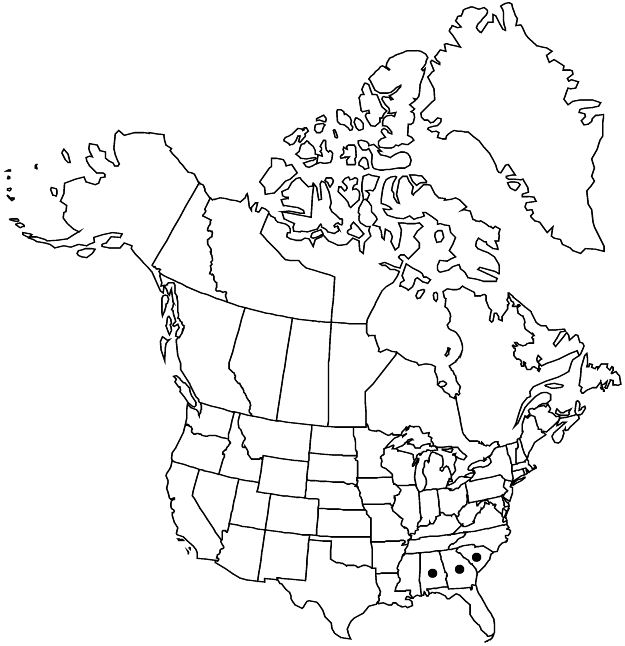Crataegus sororia
Bot. Gaz. 30: 336. 1900.
Shrubs, 20–30 dm. Stems: twigs ± flexuous, new growth olive green, pubescent, 1-year old reddish brown, pubescent, older dark gray-brown, glabrous; thorns on twigs straight or recurved, 2-years old dark gray-brown, slender, 3–4 cm. Leaves: petiole length 20–25% blade, winged distally, pubescent, sessile-glandular; blade broadly elliptic to orbiculate, 1.5–4 cm, ± coriaceous, base attenuate, lobes 1 or 2 per side, small, neat, and regular, sinuses shallow, lobe apex acute, margins serrulate, teeth gland-tipped, veins 3 or 4 per side, apex obtuse, abaxial surface glabrous, adaxial pilose young, glabrescent. Inflorescences 3–6-flowered; branches tomentose; bracteoles caducous, linear, margins glandular. Flowers 15 mm diam.; hypanthium densely pilose; sepals narrowly triangular, 4 mm, margins glandular-serrate, midvein sometimes prominent, abaxially sparsely pubescent; stamens 20, anthers ivory, pink-purple, or red; styles 4 or 5. Pomes reddish orange, suborbicular, 12–18 mm diam., sparsely hairy; sepals patent-reflexed; pyrenes 4 or 5.
Phenology: Flowering Apr; fruiting Sep–Oct.
Habitat: Open scrub
Elevation: 50–200 m
Distribution

Ala., Ga., S.C.
Discussion
Crataegus sororia occurs around Rome, Georgia, where it is common, in adjacent areas of Alabama, and in Aiken County, South Carolina.
Most similar to Crataegus aprica, C. sororia differs in leaf shape (proportionately wider), stamen number, and anther color. Beadle said that C. sororia is found south to Florida; no specimen from there was seen. The more or less tomentose inflorescence is a good recognition character.
Selected References
None.